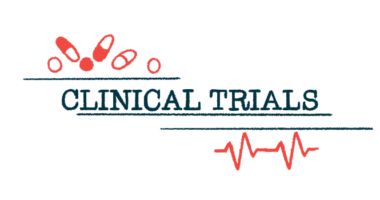Bylvay, Kayfanda in EU, safely treats PFIC: Real-world study
Children treated at clinics in Italy show lower bile acid levels, less severe itch

In real-world use, Kayfanda (odevixibat) — available under the brand name Bylvay in the U.S. — lowered blood bile acid levels and eased itch for most children with progressive familial intrahepatic cholestasis (PFIC) in an observational study.
Findings suggest that the safety and efficacy of Kayfanda in an everyday context is similar to what’s been seen in clinical trials, researchers said in the study, “Real-world experience with Odevixibat in children with Progressive Familial Intrahepatic Cholestasis,” published in JHEP Reports.
“We explored the effectiveness of [Kayfanda] in a heterogenous cohort of children diagnosed with PFIC (including patients with classic as well as rarer types of PFIC, with advanced liver disease and associated comorbidities). Our results demonstrate that [Kayfanda] is effective … in a real-life scenario,” the scientists, all with institutes in Italy, wrote.
Bylvay marketed as Kayfanda in EU, approved for patients 6 months or older
PFIC encompasses a group of genetic disorders characterized by cholestasis — defects in bile formation or transport — due to mutations in various genes, each linked to a specific disease type. Bile, a digestive fluid made by the liver, normally flows from the liver to the intestines through a series of tubes called bile ducts. In PFIC, stalled bile can leak into the bloodstream, often leading to itching.
Bylvay is approved in the U.S. to treat itching in PFIC patients ages 3 months and older. As Kayfanda, it’s authorized in Europe for PFIC in patients starting at 6 months of age. The daily oral therapy works to reduce the buildup of bile by increasing the amount of bile that’s excreted in feces.
Clinical trial data support the treatment’s ability to lower blood bile acid levels and ease itching in people with PFIC. European regulators, however, noted that a pivotal trial had a small number of pediatric patients and short duration. The researchers, in reporting outcomes of PFIC patients treated at a dozen centers across Italy, also noted a lack of data on the therapy’s use in a real-world context.
“Randomized controlled trials (RCTs) are conducted on populations that have been selected according to inclusion and exclusion criteria. Consequently, patients with comorbidities or disease subtypes are often excluded,” the scientists wrote. “Patients enrolled in RCTs do not truly represent the entire population, and therefore results from RCT require confirmation from clinical situations that are commonly faced in a real-world scenario.”
Eight of 24 patients in real-world study had less common types of PFIC
Their study included data on 24 patients with a range of PFIC types. Most were children ages 3 through 12, while two patients were in their 20s, both diagnosed with PFIC as children and still treated at a pediatric center. A few patients had co-occurring health issues (comorbidities) such as psoriasis, developmental delay, or celiac disease. Prior to starting on the treatment, nearly all of the patients had high blood bile acid levels and reported substantial itching.
Most patients started on Kayfanda at a dose of 40 micrograms per kilogram of body weight per day (mcg/kg/day), while five started on a higher 120 mcg/kg/day dose. Of those beginning on the lower dose, about 1 in 3 eventually moved to the higher dose.
Bile acid levels in the blood dropped substantially after six months of treatment, with median levels falling from 317.1 to 45.6 micromoles per liter, available data showed. Three-quarters of the patients experienced a reduction in blood bile acid levels of at least 70%.
Data also indicated that the therapy eased itch for most patients, with 73% of them reporting a reduction in itch severity after six months of treatment. Patients who experienced a drop in blood bile acid levels also tended to report eased itching, the researchers noted.
Most of the eight people with rare types of PFIC — which the study identified as types 4, 5, 6, or 9 — experienced a response to treatment similar to that seen in patients with more common disease types. Kayfanda was well tolerated overall, and no serious side effects related to the therapy were reported.
Therapy’s use in clinics ‘strongly supports’ benefits seen in clinical trials
Six of these 24 patients did not respond to Kayfanda, and their blood bile acid levels remained elevated after several months of treatment. Statistical analyses showed that the likelihood of being a nonresponder increased with higher blood bile acid levels prior to the treatment’s start. Patients with blood levels above 333.5 micromoles per liter were 17 times more likely to not respond to the therapy.
Findings from this real-world study, overall, are consistent with the benefits of Kayfanda seen in PFIC clinical trials, the researchers said.
“We believe that this study strongly supports the results obtained in RCTs in a group of patients that truly represents the actual population of a real-life scenario,” the scientists concluded, noting that larger studies with longer follow-up times are warranted to continue collecting data on the therapy’s effects.







